Posted By Bob Lefebvre
The fall session of the Friends of Fish Creek Provincial Park birding course began in early September. In the first week of October, the groups birded along the irrigation canal in SE Calgary, from Gosling Way to 50 Avenue. The canal is drained each year at the end of September, and the first couple of weeks of October are excellent for waterfowl and other birds feeding there.
On October 8, 2017, Max Ortiz Aguilar went with his Sunday morning group and took some excellent photographs. (All photos taken by Max Ortiz Aguilar, Irrigation Canal, Calgary, October 8, 2017.)
One of the star birds here in the fall is the Hooded Merganser. There are usually quite a few in the canal, and you can get good close looks.
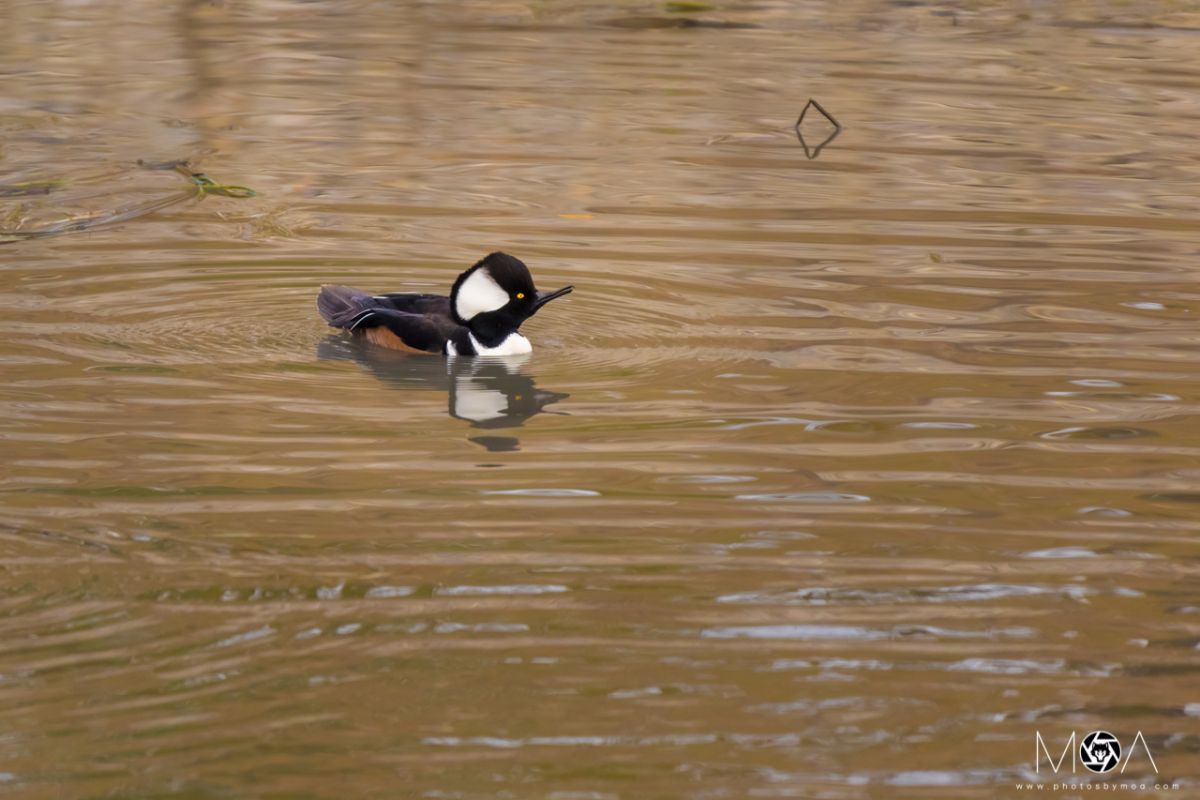
Hooded Merganser (male).
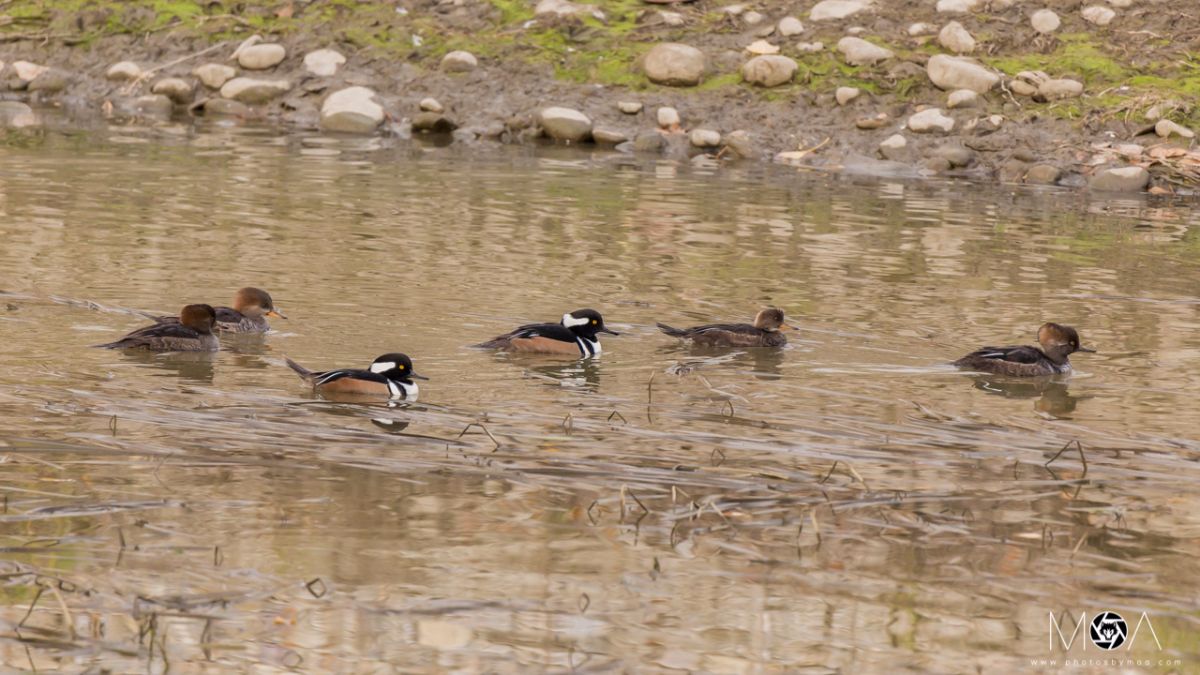
Two male and four female-type (female or immature) Hooded Mergansers. The right-hand bird looks like a young male.
The most common shorebird in the fall is the Greater Yellowlegs. Lessers are also seen, but in low numbers. Killdeer and Spotted Sandpipers are usually around, and sometimes you find Dowitchers and even American Golden-Plovers.
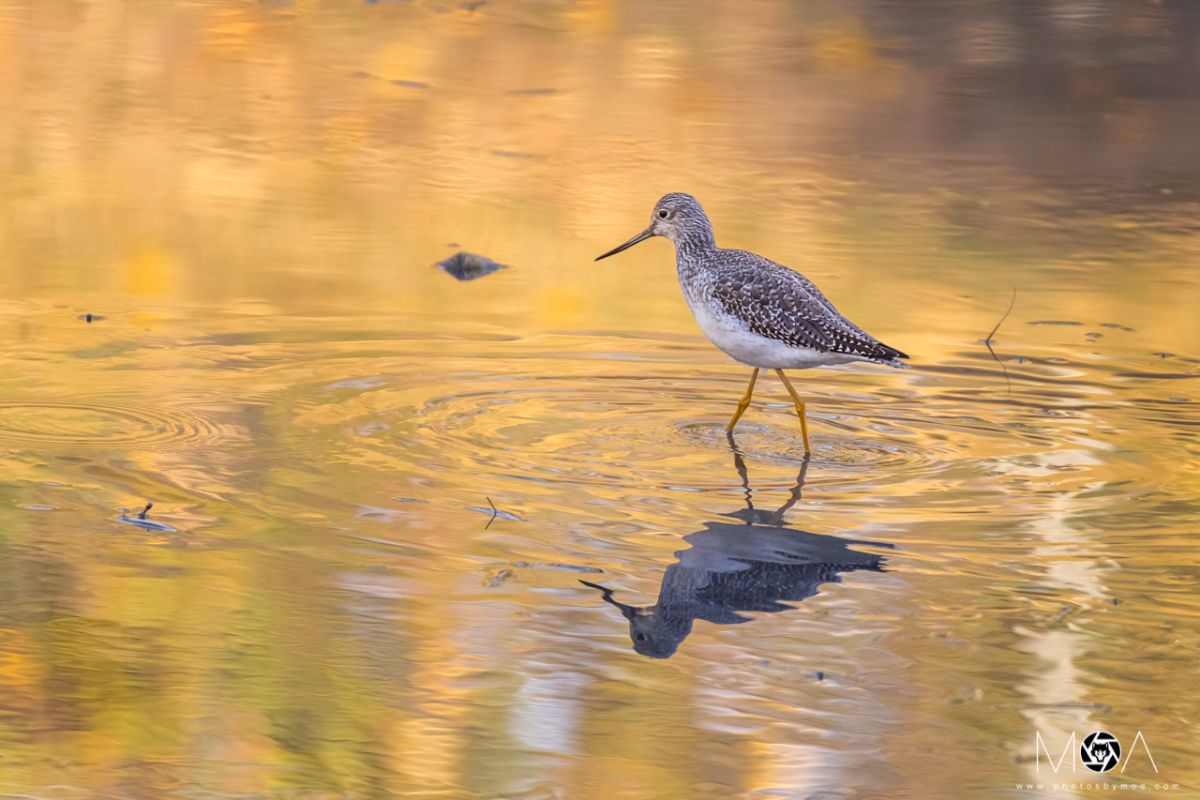
Greater Yellowlegs.
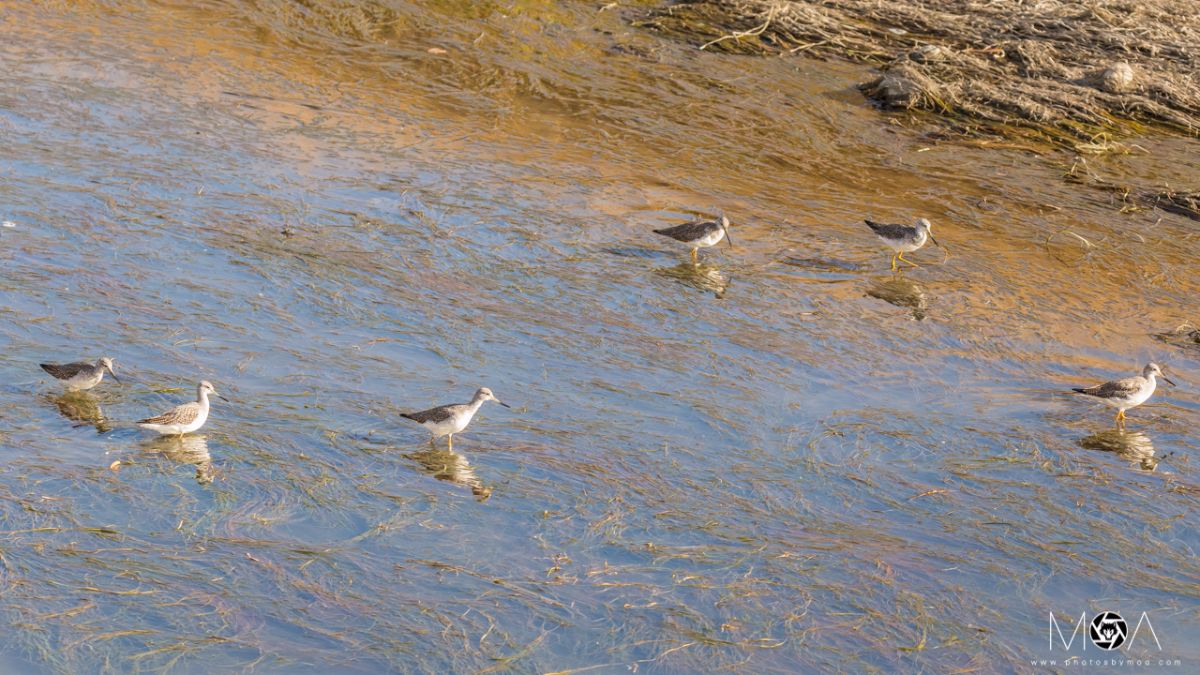
Greater Yellowlegs group.
The most common waterfowl here, as on the Bow River, are Canada Geese and Mallards. You can usually see a few hundred on this stretch of the canal. You can also find Northern Shovelers, Redheads, Common Goldeneyes, Common Mergansers, and Double-crested Cormorants feeding in the canal. There are also huge numbers of Ring-billed Gulls, plus Franklin’s Gulls and sometimes uncommon migrant gull species.

Canada Geese and Mallards.
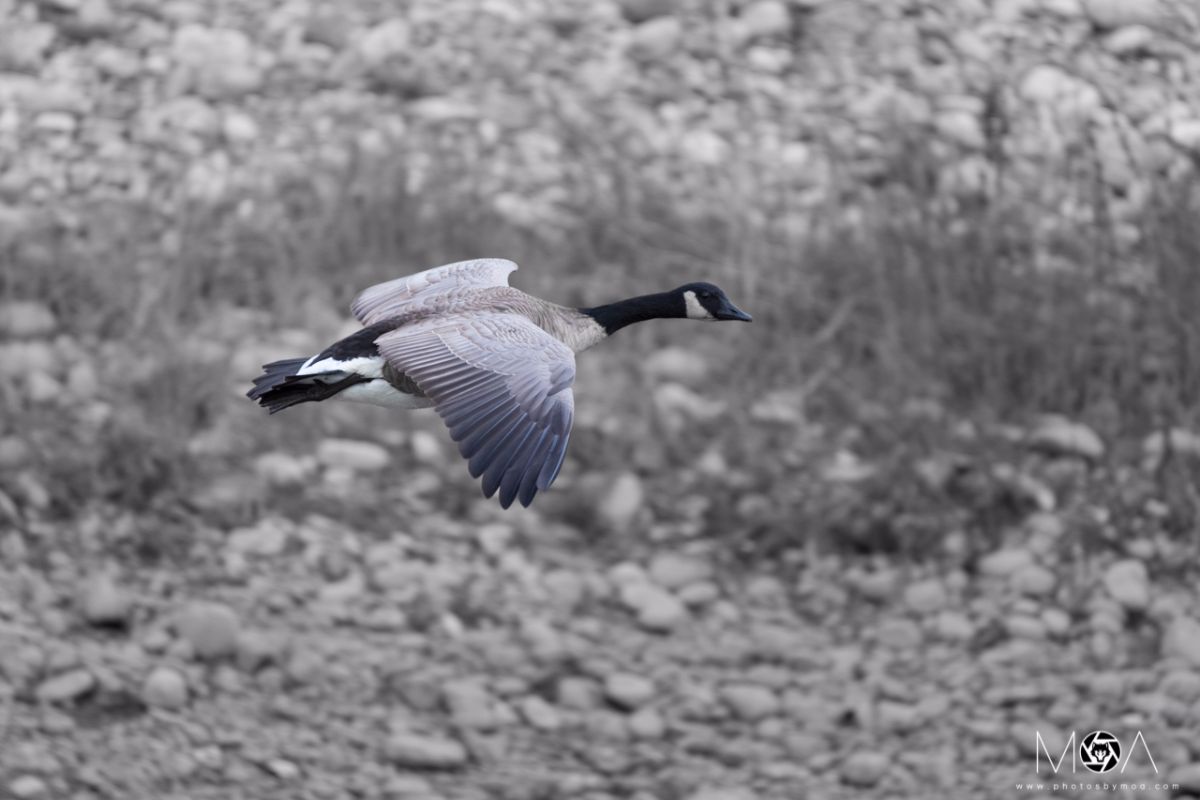
Canada Goose in flight.
American Wigeons are often seen. By this time the adult males are transitioning to breeding plumage, or have already done so.
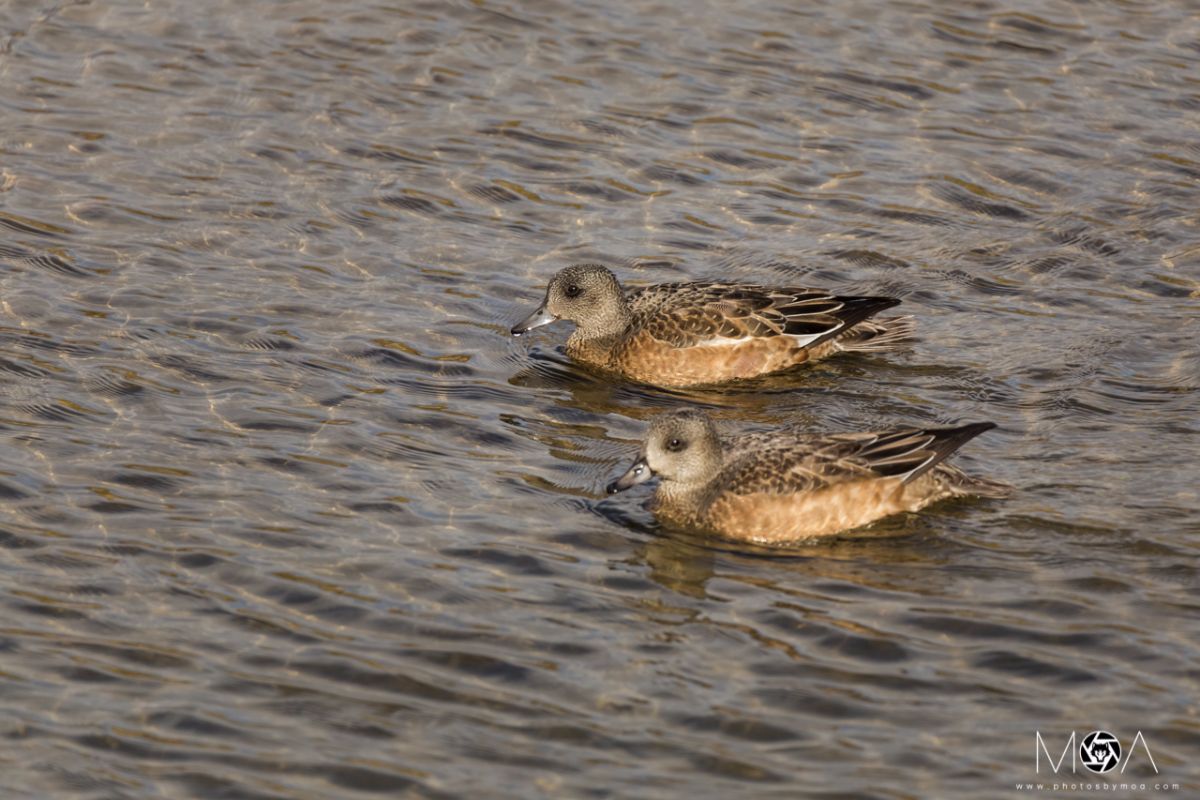
American Wigeons (females).
You can find quite a few songbird species in the treed areas (especially along the golf course). The chickadees are rather tame.
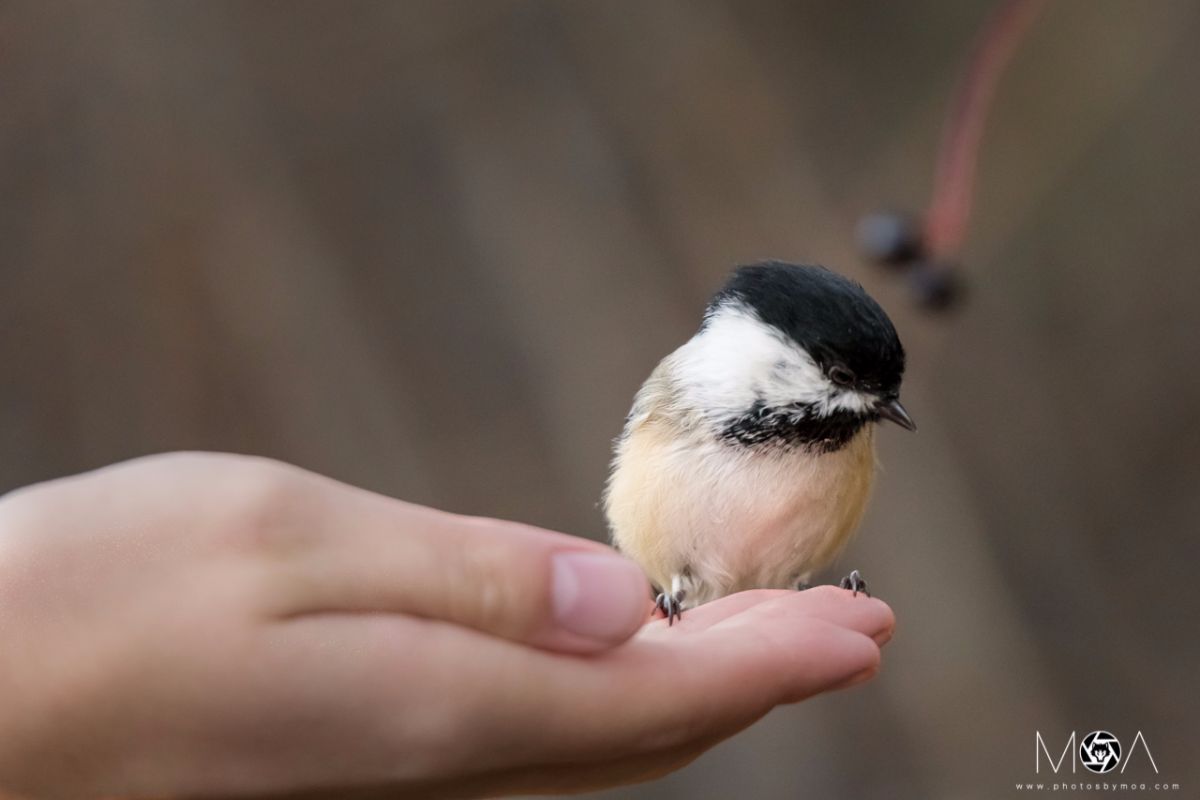
Black-capped Chickadee.
Owls aren’t usually seen right along the canal but the group got lucky this day.
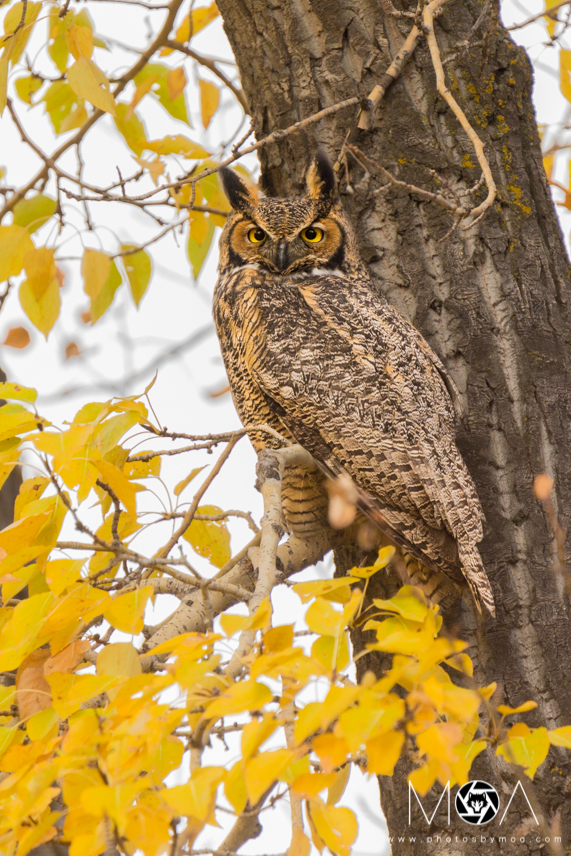
Great Horned Owl.
Mule Deer can be seen occasionally anywhere along this stretch of the river. You may also see Eastern Gray Squirrels, Coyotes, Red Foxes, Beavers, Muskrats, and American Mink.
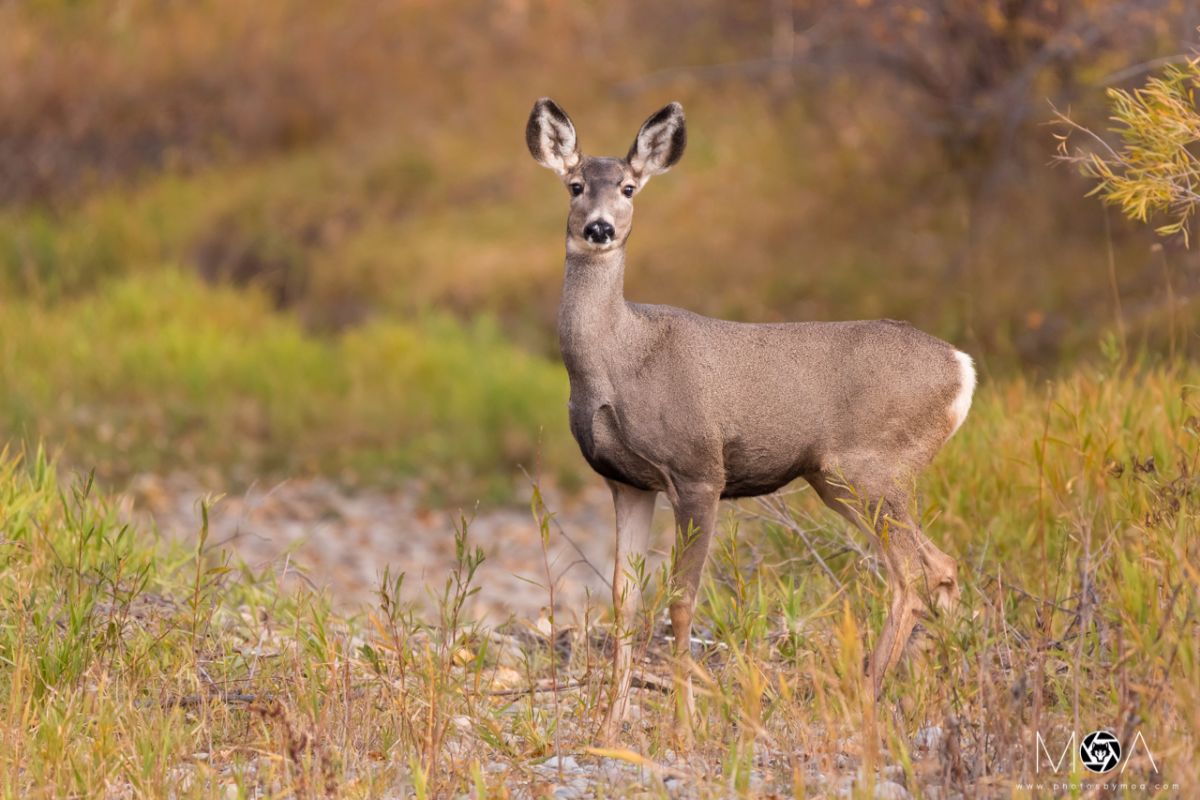
Mule Deer.
Finally, the canal is a good place to find the scarce Rusty Blackbird in the fall. You can see them turning over leaves at the water’s edge.
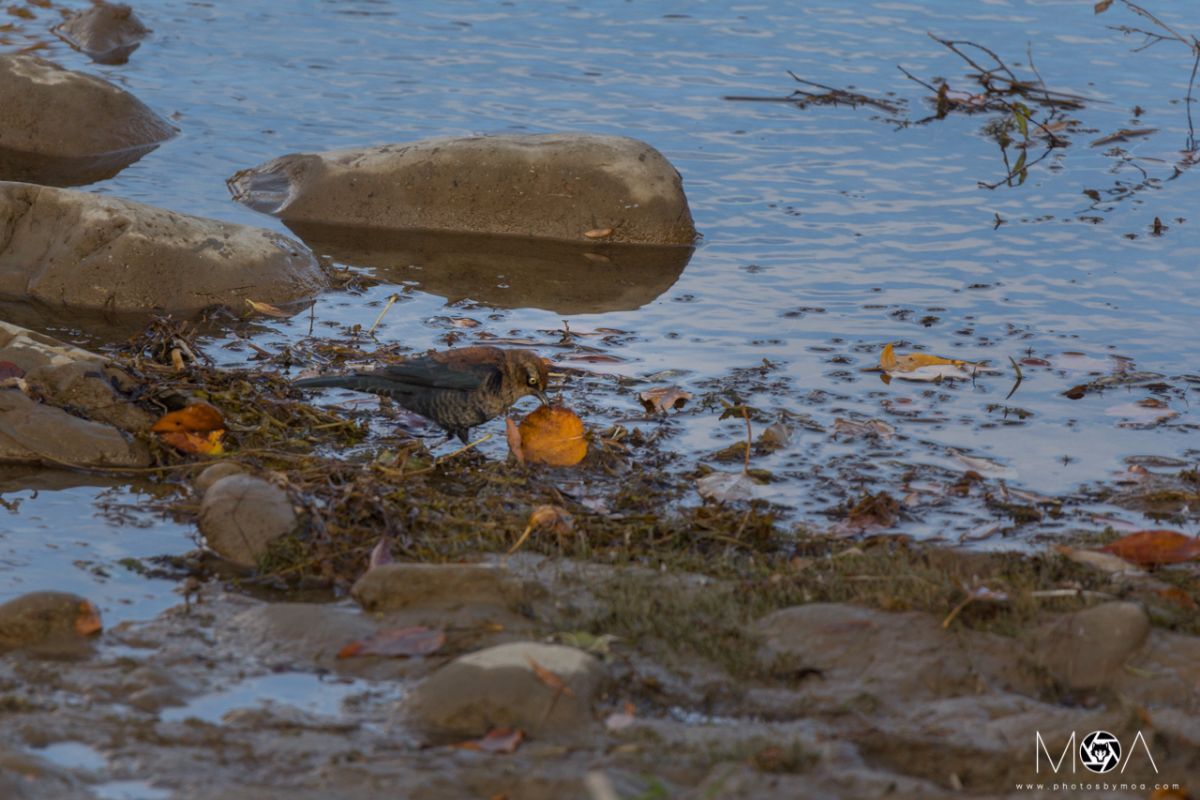
Rusty Blackbird.
To see more of Max’s photos, go to his Flickr page.
If you are interested in joining the Friends of Fish Creek birding courses, see this page. The Winter session begins on January 8, 2018, and they are now taking registrations.













